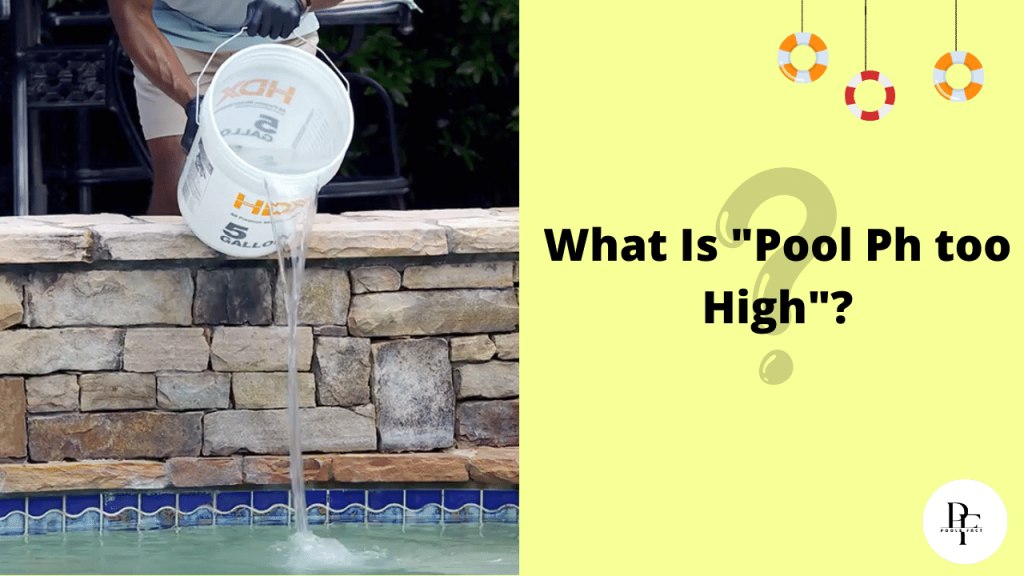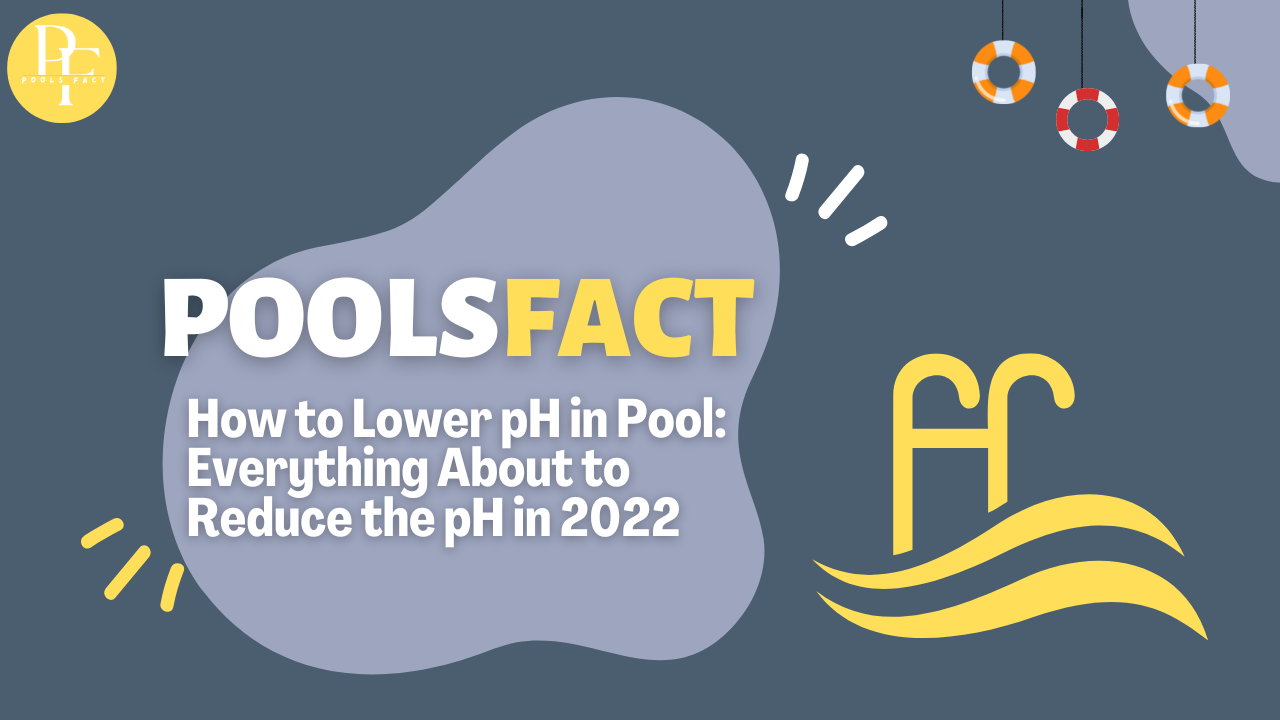Is your pool’s pH level too high? You may experience irritated eyes and skin, hazy water, algae growth, and even damaged pool components if the levels remain high for an extended period of time. To restore your pH level to normal levels, you must immediately add some pool chemicals. Muriatic acid or a pH decreaser (sodium bisulfate) can be used to lower pH in pool.
To quickly review some basic chemistry, pH determines whether a substance is basic or acidic. The pH scale has a range of 0 to 14, with 7 being neutral, anything below 7 being acidic, and anything above 7 being basic. The pH level of your pool should be between 7.4 and 7.6 when it is properly balanced.
Even the swimmers themselves have the power to change the pH level of the water. Things might become out of balance due to factors like rain, dirt, and debris in your water. Furthermore, systems using salt water produce inherently high pH levels. Because pH level changes so quickly, it’s important to keep an eye on it in your pool as part of regular maintenance.
For a detailed explanation of what impacts pH level and how to use muriatic acid or a pH decreaser to lower the pH in a pool, continue reading.
What Is “Pool Ph too High”?

pH gauges how acidic the water in your pool is.
One is highly acidic and fourteen is strongly basic on this scale. At a pH of 7, neutrality is located in the centre.
The ideal pH range for pool water is 7.2 to 7.8, or slightly basic.
But if your water is too basic, it will make your water cloudier, weaken your sanitizer, cause scale to form on your pool’s surface, and irritate your skin and eyes in general.
In other words, if your pool’s pH level is higher than 7.8, you should take action to lower the pH to avoid problems with your water.
What occurs if the pH in your pool ph is too high?
When your pH level is 7.8 or higher, you have high pH in pool. If you leave your high pH pool water alone for a long time, it can cause a lot of problems, like eroding pool parts and hurting people who swim in it.
It reduces the effectiveness of chlorine
The chlorine in your pool won’t be able to clean the water as well if the pH is too high. To achieve the same result as before, you’ll need to apply more chlorine, which may disrupt the chemical balance of the pool’s other components. You might have an algae bloom if chlorine isn’t effective at killing bacteria. Additionally, you can get calcium buildup, which can result in hazy water and broken pool equipment.
It irritates the skin and eyes.
Swimmers may experience itchy, red eyes due to high pH in the pool. They might also develop skin irritability. So, contrary to what most people think, it’s not too much chlorine that irritates the eyes and skin, but rather very high pH levels.
Swimwear and swim equipment by Erodes
Goggles and swimwear should not be exposed to the high pH in the pool. Your swimsuit may eventually fade or lose its ability to keep you warm to the point where the chemical imbalance makes it unwearable. Goggles could deteriorate and crack earlier than you anticipated.
Pool equipment is harmed.
Too High pH will cause calcium scale to accumulate on your pool’s walls as well as on the pool equipment. The accumulation may clog machinery and obstruct water movement into and out of the pool. The pool pump can malfunction as a result of this and possibly become ineffective.
How to Lower the pH in Pool?
You should always test your water before you take any action. Check the pH level, acid demand, and total alkalinity with a pool test kit.
When you’ve established that the pool pH is too high, you should start working to get the equilibrium back. Muriatic acid and sodium bisulfate, sometimes known as dry acid, are the two main products used to reduce pH in pool.
The actions for each product are as follows:
Sodium Bisulfate
1. Read the manufacturer’s directions and, depending on your preliminary tests, measure the appropriate quantity. Some advice adding 3/4 of what is advised in order to make corrections simpler.
2. Sodium bisulfate is often sold as a powder. On windy days, avoid using it to prevent backlash against your skin and clothing.
3. Get as close to the water as you can and, if it’s windy, downwind from you to add the chemical. To make it easier to disseminate the powder around the pool, apply it on the location of the water return jet.
4. After ten to fifteen minutes, the powder should start to dissolve on its own.
5. Retesting should be done at least six hours later, but within 24 hours is ideal.
Muriatic Acid
1. Make sure you’re wearing protective clothing, such as gloves and goggles, because muriatic acid is a potent corrosive.
2. Once more, carefully read the directions before measuring.
3. Muriatic acid can be added to your pool in two different methods. The first step is to stop the pump and then slowly and steadily pour water into the deep end. Turn the pump back on to recirculate the acid after letting it settle at the pool’s bottom.
4. Pouring it over the return jets and letting the pump do the work constitutes the second technique.
5. After six hours, retest the water, but don’t wait longer than 24 hours.
Also Read: How to Remove Urine from Pool: An Ultimate Guide in 2022
What Happens if Ph Is Too High in Pool and Alkalinity as Well?
It’s not uncommon for your pH or alkalinity to remain out of balance even after adding muriatic acid or a pH decreaser for pool. The pH may have been brought into range by adding enough muriatic acid, but your alkalinity is still too high. Alternately, you may have added enough acid to bring down the total alkalinity to the right level, but now the pH has gone down.
You can use soda ash to raise the pool’s pH and alkalinity levels if they are both too low. What if you merely need to adjust your pH, though?
By employing pool aeration, you can raise your pH levels without impacting your alkalinity (see our pool aeration guide for more information). Using a pool aerator or water fountain will produce bubbles that aid in the water’s carbon dioxide outgassing. The pH level will increase as carbon dioxide leaves the water without affecting your overall alkalinity. You can also add more acid if you need to lower the alkalinity of your water while aerating it to keep the pool pH too high.
FAQS
How do I lower pH in my pool naturally?
Sometimes completely changing the water is the most efficient approach to address a pH issue in a pool without the use of chemicals. A partial drain and topping off the pool with water with a lower pH level will naturally bring your water’s pH back down if it is too basic. 30 April 2022
Is it safe to swim in a pool with high pH?
Water is neutral when its pH is 7, alkaline when it is above 7, and acidic when it is below 7. The pH should be between 7 and 7.6. Anyone who swims in the pool runs the danger of developing skin rashes if the pH of the water is higher than 8, and swimmers’ eyes can hurt if the pH is lower than 7.
Can baking soda lower pH in pool?
With a pH of 8, baking soda, sometimes referred to as sodium bicarbonate, is inherently alkaline. The stability and clarity of your pool water will improve when you add baking soda, which also increases pH and alkalinity.
Why is pool pH level always high?
The use of liquid chlorine or a saltwater system as the main sanitizer is the most frequent cause of a persistently high pH level in swimming pools. The result is sodium hydroxide, which has a pH of roughly 13. For roughly a year following installation, pebble finishes or new pool plaster will also raise the pH in pools.
Can you use vinegar to lower pH in pool?
In principle, you might lower the PH your pool by using regular household vinegar. When compared to the pH of your pool water, vinegar has a pH of roughly 2.5, which is a high level of acidity. However, compared to a powerful acid like muriatic acid, household vinegar is quite weak, so you would need a significant amount to reduce pH in pool.

Leave a Reply